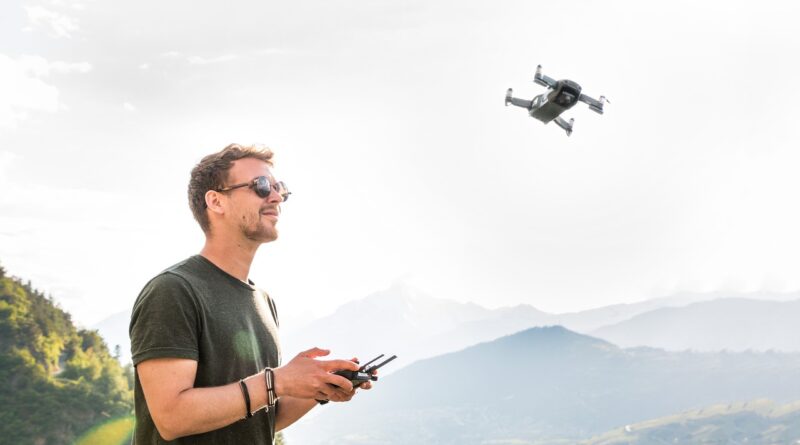Are Recreational Drones Safe: Tips To Fly Drones Safely!
25 Drone Flying Tips
Recreational drones can be safe when used responsibly and in accordance with local regulations. However, like any technology, they can pose risks if not operated properly. Here are some tips to ensure the safe use of recreational drones:
1. Learn the rules and regulations: Familiarize yourself with the laws and regulations governing drone use in your area. This includes rules regarding where you can fly, altitude limits, and any restrictions on flying near airports or populated areas.
2. Get trained: Take a training course or study materials to learn how to safely operate a drone. Many online resources and courses are available that cover topics such as flight safety, basic piloting skills, and emergency procedures.
3. Know your equipment: Understand the capabilities and limitations of your drone. Read the user manual thoroughly and practice flying in a safe, open area before attempting more challenging maneuvers.
4. Keep it in sight: Always maintain visual line of sight with your drone while flying. This helps you avoid collisions with obstacles and other aircraft, and allows you to react quickly to any unexpected situations.
5. Stay away from restricted areas: Avoid flying your drone near airports, military bases, government buildings, or other restricted areas. Be mindful of privacy concerns and respect the privacy of others while flying.
6. Check the weather: Fly in suitable weather conditions and avoid flying in strong winds, rain, or fog, which can affect the stability and control of your drone.
7. Inspect your drone: Before each flight, perform a pre-flight inspection of your drone to check for any damage or malfunctions. Pay attention to the battery level and make sure it’s fully charged before takeoff.
8. Be considerate: Respect the rights and privacy of others when flying your drone. Avoid flying over people or private property without permission, and be mindful of noise levels in residential areas.
9. Maintain communication: If your drone supports it, maintain communication with your drone via telemetry or a mobile app. This allows you to monitor important data such as battery life, signal strength, and GPS location.
10. Fly in open areas: Whenever possible, fly your drone in open areas away from obstacles such as trees, buildings, and power lines. This reduces the risk of collisions and makes it easier to maintain control of your drone.
11. Be cautious with battery life: Keep track of your drone’s battery life and avoid pushing it to its limits. Always land your drone before the battery gets too low to ensure a safe return to the ground.
12. Stay clear of wildlife: Be mindful of wildlife when flying your drone, especially in natural areas. Flying too close to animals can disturb them and may lead to unpredictable behavior.
13. Avoid distractions: Stay focused on flying your drone and avoid distractions such as incoming calls or messages on your phone. Losing concentration even for a moment can lead to accidents or loss of control.
14. Be prepared for emergencies: Familiarize yourself with emergency procedures such as initiating a return-to-home function or safely landing your drone in case of an emergency. Practice these procedures in a controlled environment so you can react quickly if needed.
15. Respect other airspace users: Be aware of other airspace users such as manned aircraft, helicopters, and other drones. Yield to them when necessary and maintain a safe distance to avoid conflicts.
16. Secure your equipment: Ensure that your drone and its accessories are securely fastened and properly maintained to prevent them from becoming detached during flight.
17. Follow manufacturer guidelines: Adhere to the manufacturer’s guidelines and recommendations for safe operation, maintenance, and storage of your drone. This helps ensure optimal performance and longevity of your equipment.
18. Check for software updates: Regularly update your drone’s firmware and software to ensure it has the latest features and security patches. This can improve performance and address any known issues or vulnerabilities.
19. Use a pre-flight checklist: Develop a pre-flight checklist that covers important tasks such as checking battery levels, inspecting propellers for damage, verifying GPS signal strength, and ensuring all equipment is functioning properly before takeoff.
20. Fly with a spotter: If possible, fly with a spotter who can help you maintain visual contact with your drone and alert you to any potential hazards or obstacles in the vicinity.
21. Be mindful of wind conditions: Pay attention to wind conditions and avoid flying in strong or gusty winds that can affect the stability and control of your drone. Be especially cautious when flying near tall buildings or in open areas with unpredictable wind patterns.
22. Practice emergency procedures: Regularly practice emergency procedures such as initiating a forced landing or taking manual control of your drone in case of a malfunction or loss of GPS signal. This helps you react quickly and effectively in real-life scenarios.
23. Carry essential accessories: Carry essential accessories such as spare batteries, propellers, and a first aid kit when flying your drone outdoors. These items can be invaluable in case of emergencies or unexpected situations.
24. Practice responsible flying: Be a responsible drone pilot by adhering to the principles of safe and ethical flying. Respect the rights and privacy of others, avoid flying over sensitive or restricted areas, and always fly within your skill level and comfort zone.
25. Join a community: Consider joining a local or online community of drone enthusiasts where you can share experiences, learn from others, and stay updated on the latest news and developments in the drone industry.
By incorporating these safety tips into your recreational drone flying routine, you can minimize risks and ensure a safe and enjoyable experience for yourself and others.

